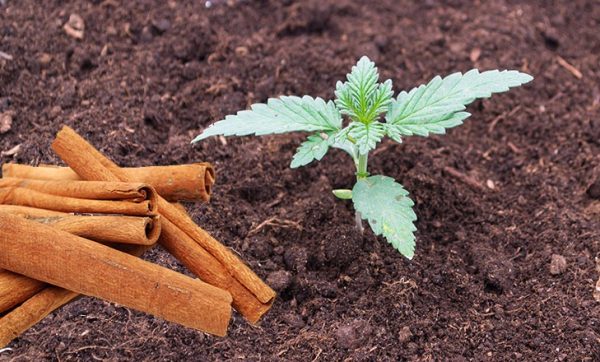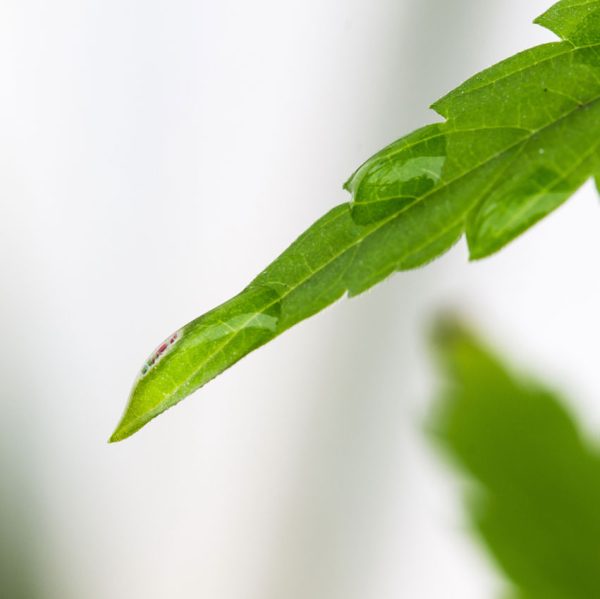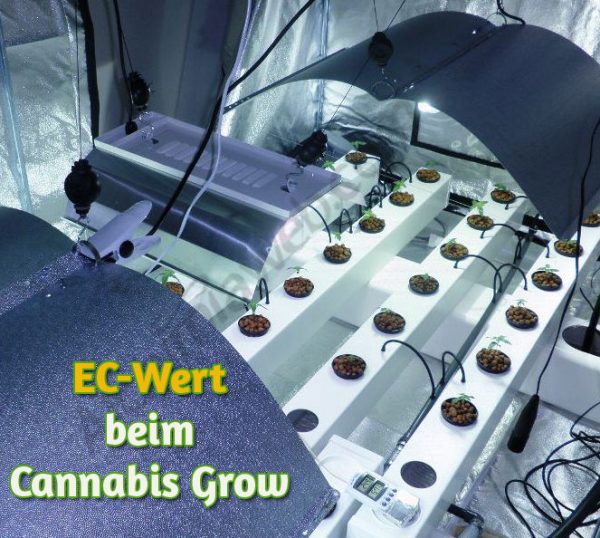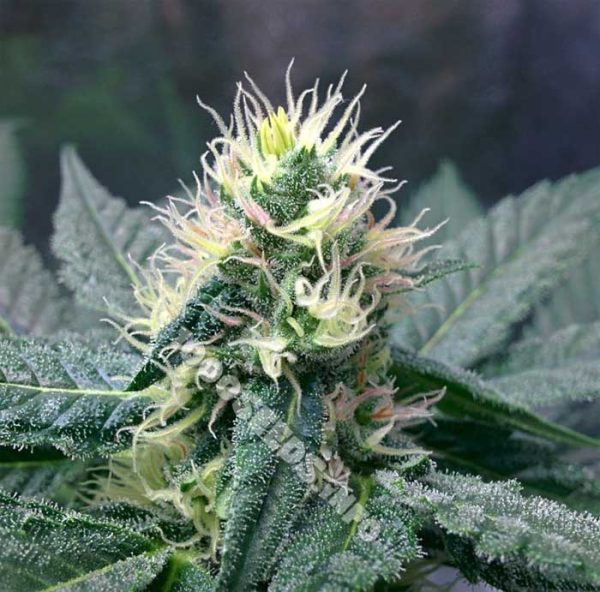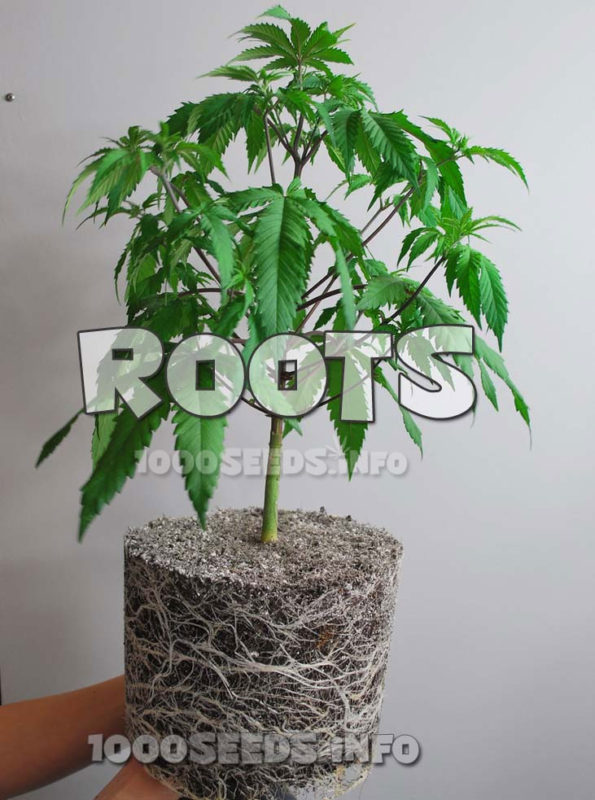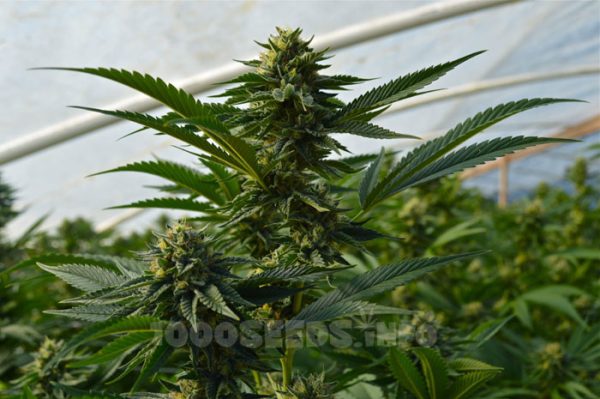Phosphorus in Marijuana Grow
Introduction
Phosphorus is an important life element for all plants and a component of nutrition. It plays a crucial role in the metabolism of the cell and is also a building block of the cell walls. Phosphorus is increasingly needed by the hemp plant during the flowering period, but is also necessary in all other phases of life, e.g. in root formation and leaf development. Phosphorus is also needed for photosynthesis and cell formation.
Phosphorus is a chemical element and belongs to the non-metals. However, phosphate compounds that can be absorbed and utilised by plants are rarely found in nature. In the past, ground bones (bone meal) were used as fertiliser and sulphuric acid, which made increased phosphates available to the plant. At the end of the 19th century, guano (Guanokalong), which is made from the droppings of seabirds, was used as a natural phosphate fertiliser and mined for agricultural purposes. In the meantime, phosphates are made usable for agriculture and horticulture from phosphate-rich ores from Morocco, Algeria, North and South America. These are first acidified and then purified.
An optimal supply of phosphorus causes:
- Better development of the roots.
- Stronger and more robust growth.
- Better storage capacity of the substrate.
- Higher resistance to cold.
- Increased production of sugar and starch, resulting in better buds.
Phosphate deficiency
Certain symptoms of phosphorus deficiency must not be confused with nitrogen deficiency. A phosphorus deficiency in hemp plants is not characterised by a purple colouring of the stems and leaf veins, but by a small-growing plant with purple-black necrotic leaves that become deformed and dry. The plants are also more susceptible to insects, fungi and diseases.
The course of the phosphorus deficiency in chronological order:
- At first the plant turns dark green
- Plant growth and the development of side shoots is delayed.
- After 2 to 3 weeks, dark purple/black necrotic spots appear on the leaves, the leaves deform.
- The purple/black necrosis reaches the petioles. The leaf twists, crumples and dies.
Causes of phosphate deficiency:
- Too high pH-value of the water (>7) prevents the uptake of phosphorus by the roots.
- Soil too acidic or too rich in iron or zinc
- Soil retention
How to combat phosphorus deficiency?
- Adjust the water to a pH-value of 6-6.5, for hydroponics use a pH-value of 5.5-6.0! (Lower pH with e.g. Canna pH- )
- If there is excess zinc in the soil, wash the roots with water at pH 6-6.5 and subsequently water lightly with phosphorus-rich fertiliser.
- Phosphorus from mineral fertilizers ( e.g. Canna Phosphor or Hesi Phosphor Plus ) can be converted more quickly than from organic fertilizers.
- prevention is better than cure, so always use good soil and fertiliser, e.g. Guanokalong Bat Fertiliser underwork
Excess phosphate

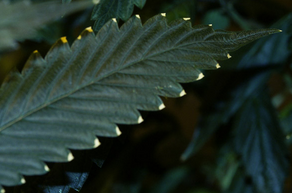
An excess of phosphate in the plant affects it enormously, as this blocks the uptake of other necessary elements such as calcium, magnesium, zinc and copper. This leads to an undersupply of the plant, which can no longer be compensated for even with higher administration of these elements.
How to combat the phosphorus surplus?
- Rinse plants well with water, i.e. water with 3 times the volume of the pot.
- If the plants are not in the last 2 weeks of the flowering phase, you can use enzymes (e.g. Hesi PowerZyme or CannaZym) into the water. These dissolve the stored elements in the substrate so that they can be broken down.
- In the final stage of flowering, use a final flowering agent such as GHE Ribs or Canna Flush These dissolve the fertiliser residues from the roots and substrate and ensure a high-quality end product.
[fblike style="standard" showfaces="false" width="450″ verb="like" font="arial"][fbshare type="button"]








